I Don't Want to Sound Complainin'
After writing "What I Want From My Next DSLR" I finally bit the bullet and upgraded my two DSLRs. This was driven by three considerations:
- I'd been trying to place some better images with stock agencies, and come up against their image size requirements, which mean that images from an 8MP or even a 10MP camera are unacceptable with any more than a tiny amount of cropping.
- There's an optimum time to upgrade a digital body: when you've got decent use out of it, when the new version has changed enough to justify the upgrade, but when the old one is still new enough to fetch a decent price on eBay. I reckon this is 2-4 years. One of my cameras was squarely in the window, the other right at the end of "just new enough".
- I wanted some new toys to play with, and to make sure they were working well before a friend's wedding in September.
Now I knew I wouldn't get exactly what I asked for in my previous article, but I did hope for fairly straight replacements with a higher pixel count and improved high-ISO performance.
Upgrading my Canon 350D was easy - the 550D is very much a straight replacement, albeit with 18MP, live view and movie capabilities. It even has an RGB histogram, missing from the 350D, and numerous detail improvements, but is essentially the same lightweight, capable camera. The ergonomics are very similar - not bad at all, but I have become used to the larger grip and second control dial of the 40D. I wouldn't change the size of the XXXD series, but I don't understand why Canon persist in not giving it a rear control dial, when they do provide one on almost all their other "enthusiast" cameras, including the G10/11, and even the S90.
Replacing the 40D was trickier, as Canon have not continued the XXD series directly. The 50D is now two years old. Instead of a 60D, last year Canon introduced the 7D. This is more like a cross between the 40D and the 5D MkII, and is rather more expensive, but at least it's compatible with my ES-F lenses, so after some umming and ahhing that's what I decided upon.
Now before I get to the negative bit, and lest anyone think me ungrateful, let's acknowledge that the 7D is a very good camera. It does well all the things that other Canons do well, and I have great hopes for the advanced auto-focus, although I haven't yet found anything to really test that. I also really like the built-in level and composition grid, and the much-improved live view features.
Low light performance of the new cameras is very good, although the improvement is marginal over the 40D in the crucial (for me) 1600-3200 ISO range. Have a look at these crops from shots processed from the RAW files with no sharpening or noise reduction:
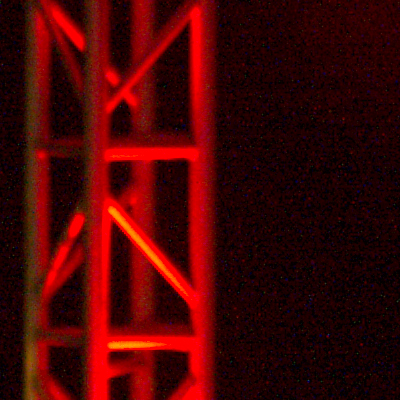 40D ISO 1600 |
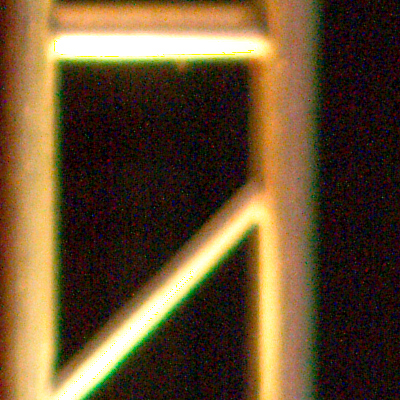 40D 3200 |
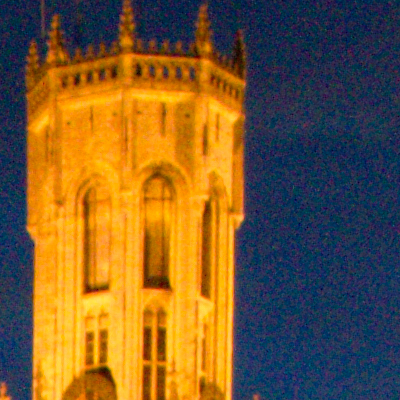 7D ISO 1600 |
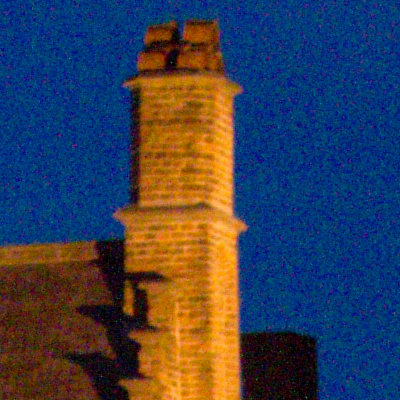 7D ISO 3200 |
In both cases the ISO 1600 shot will clean up well, and should make a decent print, the ISO 3200 shot is marginal, and will take a lot of juggling to get a good balance between noise and sharpness. 7D (or 550D) shots at ISOs 6400 and 12800 will never be portfolio quality. That said, in the 550D I now have a "carry round" camera capable of this performance, and both of the new cameras deliver this quality from sensors almost twice the pixel density of the 40D's.
So we've established that the 7D produces good pictures. Its offences are against ergonomics and design purity.
First up, weight. The dimensions of the 40D and 7D are almost identical. However, it weighs a whopping 80g more. That's all but 3oz in old money, or a more than 10% increase. Obviously my previous entreaties to Canon to "just add lightness" haven't yet borne fruit. There's no good explanation for the increase. Weather sealing has allegedly been improved, but rubber isn't very heavy. Maybe there's a lead weight (or, marginally more realistically, a tube of mercury) swinging around for the level? Whatever the cause, I predict a number of 7D owners becoming tired either directly of the weight, or the blurry images to which it may well lead.
Then there are several completely superflous controls, most of which just get in the way. My bète noir is the rear control dial lock switch. What's the point of this? If you're such a klutz you can't pick up a camera without randomly twiddling the controls then maybe a high-end Canon isn't for you. And why just lock the RCD and no other controls? It doesn't even lock the RCD fully - the latter can still be used in the menus. Instead it's a needless point of failure - my first 7D had to be returned because this switch had failed, and I have seen several similar cases on the web.
Next, the "multi-function button", and auto-focus control. Functions carried across from the XXD series have a delightfully consistent logic: press a single button, and then the front control dial sets one aspect, while the RCD sets the other. For example, exposure compensation and bracketing. In most other Canons, AF is similar. Not the 7D. First you press the AF select button as before, then you have to press this fiddly new button next to the shutter release to cycle through the AF modes, and finally you can select an AF zone or point with the RCD. Why not just cycle the AF mode with the front dial, and the detail with the RCD?
The "multi-function button" isn't well named, as by default it only perform this function and flash exposure lock. However you can, if you ferret around in the custom function menus, assign a much more useful function - triggering the viewfinder display of the level and composition grid. This excellent capability really needs to be enabled by default - why not on the wastebasket button, which falls naturally under the left thumb and otherwise has no function when shooting?
The idea of being able to re-assign some buttons is a good one, but very strangely and half-heartedly implemented. For example, I'm never going to use RAW+JPEG button, because I always shoot with that combination anyway. Why can't I assign this to something useful, like mirror lock-up? Yet I can re-assign the shutter half-press to another function (from the absolute SLR standard of "focus and meter"), which would be a remarkably contrary thing to do.
Finally, what's with the "reprofiled grip"? I don't know who Canon reprofiled it for, but it's certainly not men with average sized hands, who now find a painful ridge under the thumb pad where the 40D was fine. At least one 7D is going to have to be modified with rubber tape, and that's not good.
So sorry Canon, I can only give the 7D 7/10, and I wanted to love it like its predecessor. You've got the electronics right, now focus on a more consistent, streamlined and comfortable user experience. You know how to do this - just look at the 40D.
And finally congratulations, and lots of candles next birthday, to anyone who gets the title of this piece.
Buy It From Amazon
Amazon.co.uk  | 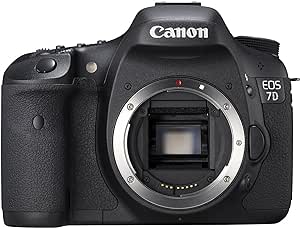 | Amazon.com
|
Comments
One Response to I Don’t Want to Sound Complainin’
Andrew on 29 August 2010 at 17:27
Addendum: Less than a week after I posted this, Canon have finally announced a 60D. In some ways, it might be a better camera for me – the weight’s certainly closer to the 40D, and it sounds like the controls have been rationalised. But in other ways Canon have done what I feared, and “cheapened” the camera to leave space for the 7D, so the 60D is slower, and omits some key “professional” features including the important (for me, at least) multiple custom shooting modes. There’s still no perfect upgrade from the 40D…
If you'd like to comment on this article, with ideas, examples, or just to praise it to the skies then I'd love to hear from you.

 Thoughts on the World (Main Feed)
Thoughts on the World (Main Feed) Main feed (direct XML)
Main feed (direct XML)